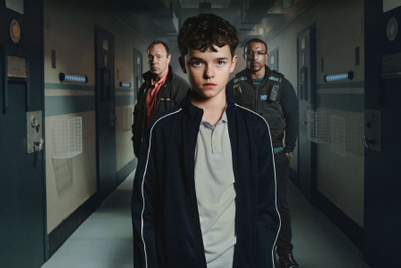
| PARTNER CONTENT |
Words we routinely use in daily life are often ruled by stereotypes. Take the word ‘marriage’ as an example. Even though the dictionary might say marriage is a union between man and wife, in some countries, it could also mean a union between two people of the same sex.
The word ‘handsome’ is equally nebulous— does it mean ‘a well-balanced face’? And what does ‘well-balanced’ even mean?
Words are a living matter. The meaning of words are forever changing, depending on the country or region one is in, ethnicities, and the zeitgeist.
TikTok has launched TikTionary to pay tribute to this. Essentially a dictionary and the game Charades rolled into one, users post vids of their interpretation of certain words, be it ‘greeting’ or ‘diversity.
Since launching in January, TikTionary has garnered hundreds and thousands of video posts from users in various countries and regions around the world.
TikTionary kickstarted with 100 words but has since developed a much larger trove of words—and in 17 different languages. If you search for the word ‘greeting’, you’d see videos of a geisha offering a name card, teammates doing high fives and animals sniffing one another. It has become a dictionary one could not only watch, but also feel.
 “I wasn’t a serious TikTok user before I was involved in the project, and I guess that’s how I was able to see its merits with completely new eyes,” says Kojiro Kizu, creative director of Dentsu.
“I wasn’t a serious TikTok user before I was involved in the project, and I guess that’s how I was able to see its merits with completely new eyes,” says Kojiro Kizu, creative director of Dentsu.
Kizu developed and led the project with Suzuki.
“In TikTok videos, I found that undisguised feeling of young people. It is very real. I’m also impressed by the speed of posting, all those different languages and uniqueness of each videos. I thought TikTok itself was almost like a dictionary”.
“I felt the most important attribute of TikTok is that it is ‘fun’,” says Kizu. “TikTionary also needs to be fun to make it work for users.
“Fun is a key factor that differs from other social media. We want young people to enjoy videos and through that, understand a different culture, rather than force-feeding them in a patronising way. I think that is more effective,” Kizu continues. “I feel there is too much useful information going around, and people seem to be a bit tired of it. I think the merit of TikTok is entertainment. As a platform, it gives users an emotional value, not cold and functional information.”
Needless to say, diversity also a keyword for TikTionary, especially at a time when so many appear to deny or turn away from it.
TikTok’s collaborators also respect this aspect.
Tomoko Nishikawa, a spokesperson and a PR officer of ‘Tobitate (leap for tomorrow)’, a public and private study abroad Initiative led by the Ministry of Education, Culture, Sports, Science and Technology (MEXT), says,  “We want to enlighten young people by making them excited”.
“We want to enlighten young people by making them excited”.
One of the challenges for young people in Japan is an introspective mindset. According to MEXT’s data, only 1% of high school students and 4% of university students are going abroad for their studies.
“Most young people lack the consciousness of being global citizens. You could live happily in a rich country like Japan. But as the world becomes more globalised, if you are not good at communicating with English, which is a universal language, and you have only Japanese friends, then you’d only be able to do well in a Japanese work environment. So, what do you have to do to make young people feel like taking the leap onto the world stage? From my POV, there are two different measures. One is providing them a sense of crisis. Another is exciting them. We’re in favour of the latter. Video is a familiar medium, so TikTionary appeals to their sensibilities. We hope that they find approaching the world more easily, and naturally”.
Volvo Car Japan is another partner for TikTionary. Noriyoshi Sekiguchi, senior marketing director of Volvo Car Japan, has high hopes for the project.
“I hope this project will really take off and stick around. Volvo has always been a progressive and liberal brand, so we’ve been putting a lot of focus on diversity and sustainability. TikTionary aligns with our brand goals. This helps put our brand front and centre of those in the 20s—which is different from our normal customer target, who are people in their 40s to 60s.”

Sekiguchi continues, “Words have two different modes. One is ‘message mode’ and another is ‘generation mode’” he continues. “TikTionary creates new meaning for word through interaction, so it is closer to ‘generation mode’. Young people often turn to videos when they search for something, so TikTionary has great potential.”
Perhaps the real potential of TikTionary is also in the speed to which TikTok has evolved — once a medium for youngsters, it is getting more and more popular among millennials and the older generation.
“We’d like to conduct online workshops, and utilise various media to increase interest,” says Suzuki.
Kizu adds, “As a matter of fact, I think young people might be borderless. Perhaps the reason why they aren’t interested in going abroad is that they don’t think they need to.
They are satisfied with experiencing other cultures through the TV and laptop. The problem then, isn’t that they are allergic to other cultures, but they aren’t experiencing other cultures with their five senses. They might think they understand other cultures, but actually that understanding is very superficial. I hope TikTionary will make them realise that, which will hopefully lead to new ways of looking at the world.”





.jpg&h=334&w=500&q=100&v=20250320&c=1)
.jpg&h=334&w=500&q=100&v=20250320&c=1)


+(1).jpg&h=334&w=500&q=100&v=20250320&c=1)

.jpg&h=334&w=500&q=100&v=20250320&c=1)




.jpg&h=268&w=401&q=100&v=20250320&c=1)



